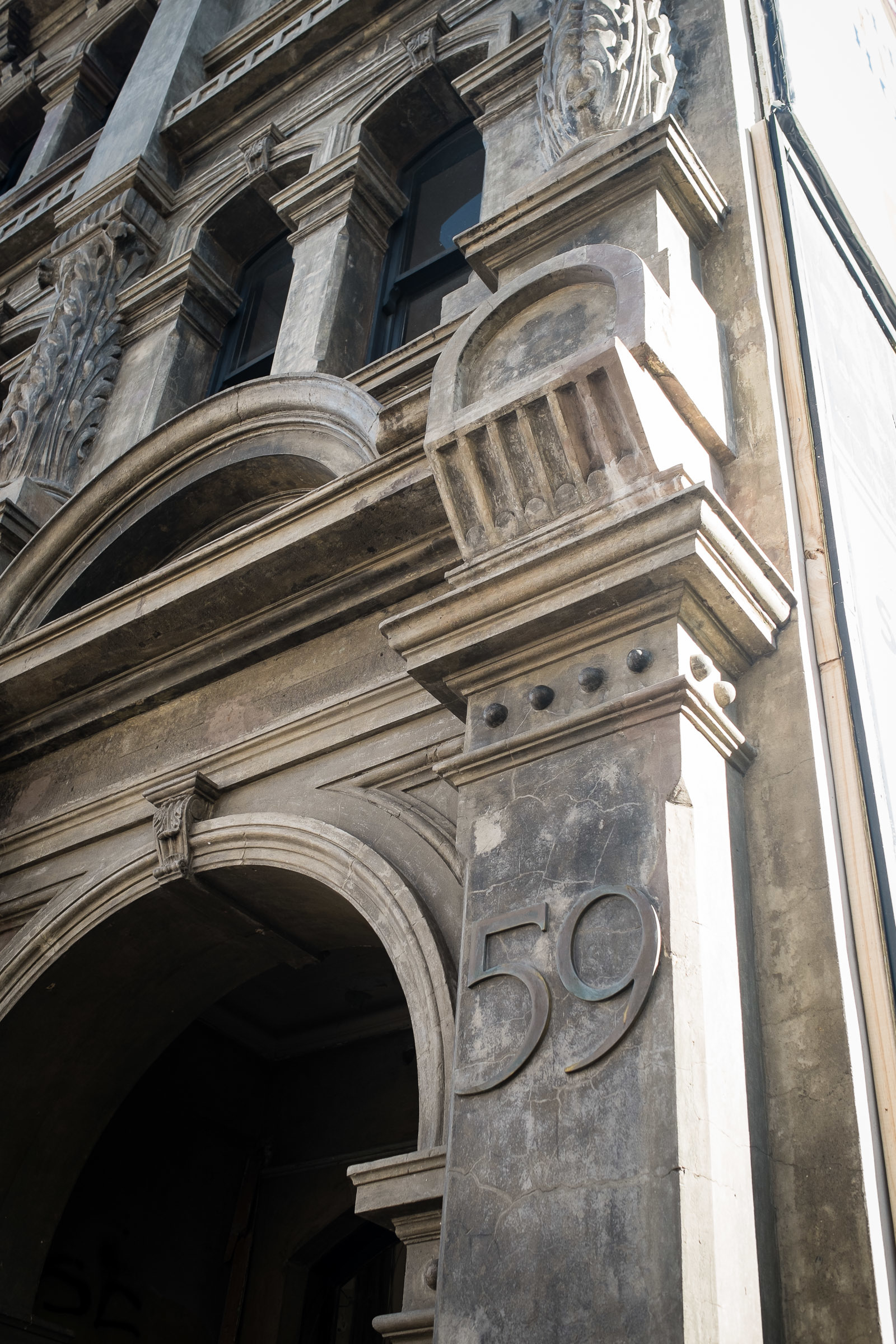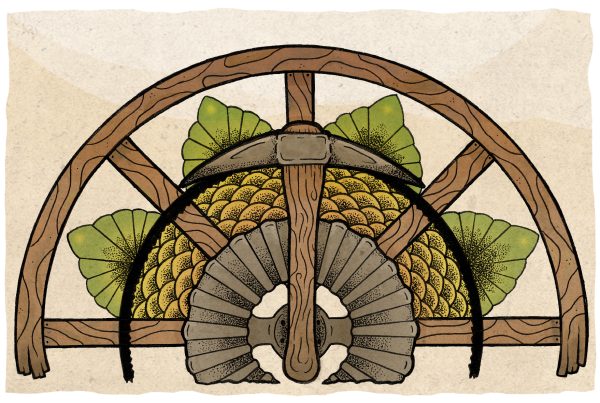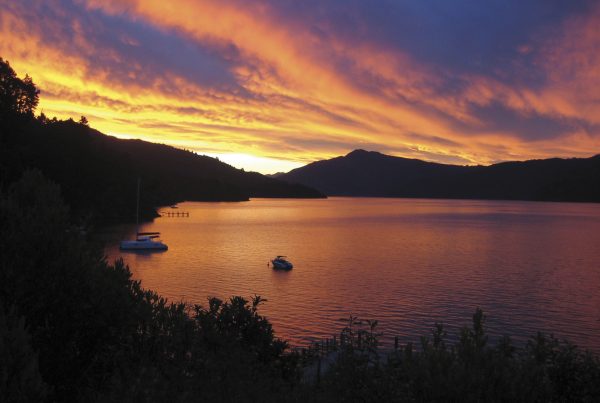Wellingtonians carry a sense of place everywhere we go. Our streets are dotted with locations of significance: hallowed Basin, gleaming Golden Mile. And then there are spots we leave off the maps: places where private passion runs as deep as any public sentiment.
Purchased sex is an irreducible component of capital life. It was here that the New Zealand Prostitutes’ Collective was founded, today an internationally recognised voice for the rights and dignity of sex workers. Wellington’s sex industry has shaped its culture, often from locations banished from polite conversation; these, in turn, become rehabilitated into places everyone knows.
Where did sex work come from? Where did it find a home? What places might we know by heart, which earlier Wellingtonians knew by other parts? The story — like all stories, ultimately — begins at sea.
Seafarers and Ship-moles
Stevan Eldred-Grigg, pre-eminent authority on long-dead New Zealanders’ private lives, contends that neither the economies nor marital codes of pre-colonial Poneke would accommodate prostitution, as we understand it. It was in barter with visiting sailors that local Māori first placed a material value on sexual companionship.
Though lonely months at sea would make sailors no less stingy. Jamaican historian Fernando Henriques cites a Captain Wallis, traversing the colonies aboard a ship “slowly disintegrating around him as its nails were systematically removed” — each one the price of an indigenous encounter. As Port Nicholson became Wellington, sailors’ desire to make port and get nailed showed no abatement. The 20th century was the age of the ship-moles: female guests aboard ship for the duration of crews’ time in port.
Dana* worked Wellington’s streets from the 1960s. “Ship-girls never asked for money,” she explains. “When you went on a ship and hooked up with a guy, he’d look after you while he was in port. He’d buy you food, he’d pay your rent — he’d spoil you.”
Sailors also brought intimations of a world beyond Wellington’s hills. ‘Ringbolting’ was the practice of ship-moles stowing away for passage to brighter climes. Former sex worker Dr Lauren Roche writes of weeks of isolation in an icebreaker’s pitch-black fan-space while ringbolting from Wellington to Seattle.
“Ship-moles don’t exist now,” says Dana, “because you have container ships with a skeleton staff.” But meantime, the sex industry had made its way inland.
R&R with Ma
Glover Park on Ghuznee Street is a popular location for a midday break or after-work brew. In the war years, this area sat bestrode by properties belonging to a formidable local figure.
Clara Hallam, known around town as ‘Ma’, bought her first Wellington property in 1928. Her later holdings included the Albemarle, whose grand grey frontage on Glover’s eastern edge houses a gutted, quake-prone interior. In Hallam’s day, the Albemarle was the White Lodge, and word was that Ma was running girls out of there. Later it became the Mayfair, a brothel catering to the high-end of the downtown market.
Hallam also owned the Mansions, on the other side of Glover Park, where now sit apartments with a car rental out front. “In the war years it was a dance hall,” says Dana, who learned local history from Ma herself. “The girls would take the R&R guys upstairs.”
The threat of sexually transmitted diseases (STDs) had long been used to leverage social controls over sex workers. While women’s groups had lobbied successfully against the most draconian of these laws, R&R was still a battle against the American military’s longest-standing foe: the dreaded VD.
Margaret Macnab, a Second World War-era nurse who administered STD checks for sex workers, told a 1986 interviewer that Ma Hallam “could have been anyone’s grandmother”. She remembers visiting workers at Hallam’s dark red two-storey where Willis Street meets Abel Smith. Another Hallam house further down the latter now hosts one of Wellington’s best coffee-roasters but was once “one of the worst” local houses of ill-fame, according to police testimony in 1943.
“The room was filthy and there were partly-consumed bottles of wine there,” huffed an inspector. The occupants “were in bed with a drunken serviceman”. Ma Hallam, then 58, was fined £100 and sentenced to three months’ detention for permitting her premises to be used as a brothel. Her arrest was one in a long line of prosecutions levelled against women in the sex industry. Ebor Street, mere blocks from the Mansions, had been the site of a 1919 raid that saw three women prosecuted as “incorrigible rogues”.
Similar raids disturbed Island Bay’s Freeling Street, and a still-standing house at the fork of Kelburn’s Upland and Glen roads. From here once issued sounds resembling “a drunken orgie [sic]. Several evenings a week,” noted the Nelson Evening Mail, “were devoted to singing, dancing and music, and usually a large number were present.” The Upland Road bust made national front pages in 1918. The New Zealand Free Lance offered little sympathy to the men “shielded from that public and private obloquy of which [their] feminine associates” bore the brunt.

Venus and Solomon
As the 20th century surged on, today’s sex industry took shape. Barry Moore opened Cuba Street’s Venus Sex Shop in 1974, in what’s now Fidel’s (the Super Cuts room). Moore did his Auckland and Christchurch contemporaries one better, reported the Evening Post, by selling “see-through nightwear, bottomless panties, and overseas lingerie” — not to mention “artificial prosthetics, novelty prophylactics, [and] goats’ eyelashes” — from cabinets, not catalogues.
When visiting Venus, “It was nice to be around someone as curious as you,” remembers Elizabeth, who worked around town in the 1970s and 1980s: “Maybe not the place to go by yourself.”
Other firsts included the Purple Onion, the capital’s premier strip club, now the site of a Vivian Street apartment block (Purple Onion); and Solomon’s, the first expressly designated massage parlour. This sat on what’s now Victoria Street, between Manners and Dixon. Solomon’s “had swing-doors like in the westerns,” remembers Dana. “Police used to walk through, and if they couldn’t see your feet or your head, then they’d push the doors open.”
“Now you can step out of anywhere and not be noticed,” says Elizabeth, who also worked at Solomon’s, but “back then you were really conscious of being seen. The only exit was the front door. It was so raw.”
Workers and international patrons found secrecy at the Crowe’s Nest: the informal title given to a private residence overlooking Oriental Parade (Crow’s Nest). “Their clients came to them,” says Dana. “They were much more hidden, much more secretive prostitutes.”
Before legal reform, female sex workers operated in the shadows; but their male counterparts, in defiance of further laws, had to be nigh invisible. In what’s now a backpackers’ on Wakefield Street dawned the Sun Sauna, later the Wakefield. Malcolm, a long-time pillar of the city’s LGBT scene, says this was the first aimed at Wellington’s gay male clientele. A Christian bookshop on the same floor provided camouflage.
And then, into this furtive night-time world strode Carmen.
Reign of the Voodoo Queen
They say she practised black magic. Dana reckons Carmen sometimes slept in a coffin; her autobiography recounts amateur vodoun rituals.
Carmen Rupe — queer icon, businesswoman, whore and Wellington’s queen — burst onto the scene as operator of Le Balcony. Wellington’s well-knowns crowded this striptease venue, nowadays the site of the CBD’s main police station.
Le Balcony was but the first jewel in the queen’s crown. Soon her International Coffee House opened next to the Sallies’ store on Vivian Street. Should her coffee — reputedly the city’s worst — fail to invigorate, regulars were taught a cup-and-saucer semaphore to indicate who they’d rather take upstairs.
The operation soon expanded over the street into the Peacock. The latter’s employees bought Carmen out, turning it into the city’s first lesbian-run brothel; today the site houses The Baby Factory. Carmen’s other premises — brothels, cafés and even an antique shop — dotted the Cuba quarter. Many young workers found a home at her Hanson Street “Hatchery”.
“Carmen was cracking it with businessmen, men from Parliament,” says Dana. At the height of the queen’s reign, Wally Martin — former proprietor of Manners Street’s secretive Club Exotic and Mt Vic’s Psychedelic Id — set his sights on her.
“He was saying her clients didn’t know that she was a man,” remembers Dana. “That was when everything changed for Carmen. She was always exotic but she became this very over-the-top person.” Martin tried to expose “female impersonators” dancing at Le Balcony.
“Of course,” grins Dana, “it filled the place up.”
Drinking Deep
Carmen’s cups and saucers are long gone, but modern Wellingtonians wishing to drink at historic sex-industry spots are spoiled for choice. Willis Street’s General Practitioner used to sit further up Boulcott Street as the House of Ladies (Boulcott). Across the intersection from its present-day location once sat the San Francisco Bathhouse.
This original SFBH shouldn’t be confused with Cuba Street’s later venue, whose premises nevertheless served a stint as a brothel some years back. But Willis Street’s original San Fran was a multi-storey complex catering to all persuasions (SFBH).
“If you wanted straight trade,” recalls Malcolm, “Wellington was small and closeted, it wasn’t legal: you had to be discreet. A lot of gay boys would go to the San Fran and meet businessmen from out of town there.”
When homosexual prohibition was struck down in 1986, Alfie’s on Cuba and Dixon became the first public gay club, adjacent to the new Wakefield — whose brand had remained even after moving from its original premises. Those, in turn, had become the Pink Pussycat, whose mascot flashed a daring pubic chalice across Wakefield Street from her martini-glass perch.
The girl-in-a-glass motif was potent enough to echo up Vivian Street onto the mural adorning the side of Tiffany’s, later Liks. The main attraction here was proudly touted from the much-mourned “Striptease” sign that flashed for decades from the Cuba/Vivian corner, before dimming into shadow in 2013. Second-hand shoppers can now purchase cast-off clothes there (Liks).
Sex work has fought to claim a place in the daylight Wellington world. Nowadays, “former brothel” is a badge of pride for numerous bars, breweries and inner-city spots. But many veterans feel a little old-fashioned sleaze still has its place.
“The world has become more serious,” says Elizabeth. “A lot of stuff seems to be coming to the surface. There’s a disadvantage to cities becoming too squeaky-clean.”
*All sources in this story have chosen the names by which they’re quoted.







